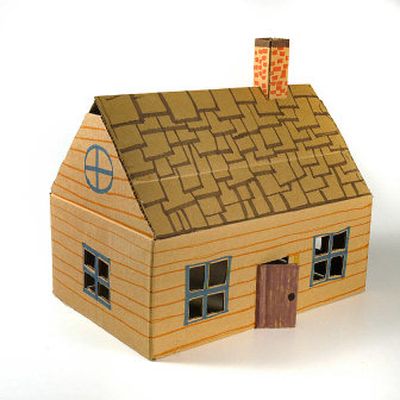Boxes newest Hall of Fame item

ROCHESTER, N.Y. – Forget the fancy toy: The box it comes in can be much more fun.
Spaceship, castle, haven to daydream in, the cardboard box was enshrined Friday in the National Toy Hall of Fame along with Jack-in-the-Box and Candy Land.
No kidding, grown-ups.
“I think every adult has had that disillusioning experience of picking what they think is a wonderful toy for a child, and then finding the kid playing with the box,” said Christopher Bensch, chief curator of the Strong Museum. “It’s that empty box full of possibilities that the kids can sense and the adults don’t always see.”
Low-tech and unpretentious it may be, but the cardboard box has fostered learning and creativity for multiple generations – a key qualifier for inclusion in the museum’s seven-year-old hall of fame. And its appeal as a plaything or recreational backdrop is universal.
All over the world, “packaging is something that’s accessible to kids, whether that’s cans or tins or wooden crates,” Bensch said, and the cardboard box “makes a point that you don’t have to spend a lot, have a certain income level or charge it on your credit card to have your kids have a great play experience.”
The museum, which boasts the world’s largest collection of toys and dolls, acquired the hall in 2002 from A.C. Gilbert’s Discovery Village in Salem, Ore.
So far, 34 classic toys have been enshrined, from Barbie to Mr. Potato Head, Legos to Lincoln Logs, Slinky to Play-Doh and Crayola crayons to marbles.
Candy Land, a board game decorated with a sweet-treats trail and destinations such as Gumdrop Mountain, was created in the 1940s by a polio victim, Eleanor Abbott, who wanted a pastime for children recuperating from illness.
Jack-in-the-Box, the jester who bursts open his box lid when a compressed spring is released, appears to have originated in the 16th century. The toy is loosely based on Punch, the dynamic puppet in the “Punch and Judy” show.
The corrugated cardboard box, which quickly came to dominate the shipping industry in North America, was invented by a Brooklyn printer, Robert Gair, in 1890.
Strong Museum, the second-largest children’s museum in America, contains more than 70,000 toys and dolls and features circus memorabilia, children’s books, household furniture, miniatures and various objects of American culture dating from the 1820s.